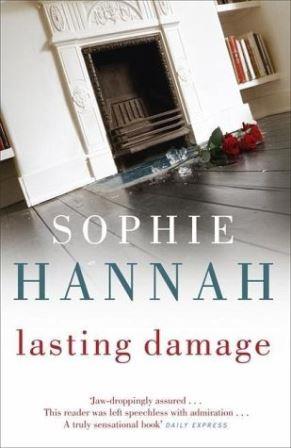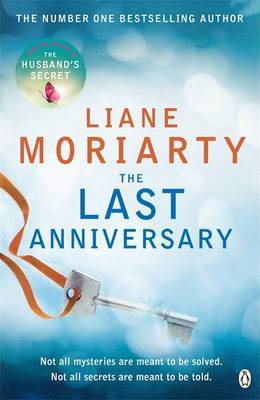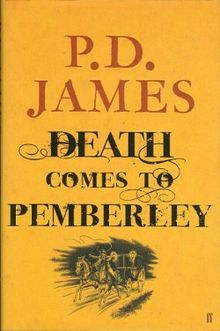
Sophie Hannah is a published poet and an established crime fiction author.
‘Lasting Damage’ is her sixth psychological crime thriller and is similar in style and approach to her previous offerings.
Now you see it…
At 1.15am, after waiting for her husband to fall asleep, Connie Bowskill begins to watch a virtual tour of a house for sale in Cambridge. She’s watching the tour to set her mind at rest – but when the camera reveals a dead body in the living room, she is thrown into panic. Waking her husband, Kit, she insists that he watches the virtual tour, but when he views the living room there is nothing to be seen but a spotless beige carpet…
This is the reason I read Sophie Hannah’s books: I find the premises really strange and immediately want answers to about a million questions. Why was Connie looking at this house in the first place? Did she imagine the body? If not, who is it, what happened and who on earth would upload the image to a virtual tour on a property selling website? If she did imagine it – why? And if Connie isn’t mad, can her husband be trusted?
In case this wasn’t gripping enough, the actual story opens with a frightening scene involving Kit and Connie set a week after the events of the first chapter. I found that while I was reading the story and my suspicions were shifting it was helpful to reread this introductory snippet from the story’s denouement.
…now you don’t.
As the story develops, Hannah gradually draws in a range of supporting characters and develops a tale about trust and obsession. Personally I found the events convoluted but plausible – not likely, but possible.
This story is structured in the same way as Hannah’s previous crime novels. Chapters alternate between the first person viewpoint of a female protagonist and a third person viewpoint from Spilling’s police force. Inbetween some of the chapters are documents relevant to the case, though in this instance it is initially impossible to understand how they could be relevant. I like this approach as it allows Hannah to create a range of cliffhangers and to carefully control the flow of information. It can mean that the beginnings of her books feel a little disjointed as three different perspectives are introduced relatively quickly, but once all three have begun they work together well.
This is not a straightforward police procedural as there is rather more focus on the detectives’ interaction and personal lives than one might expect, and the case is solved through lots of discussion and intuition and not much evidence, as the evidence itself is so minimal and difficult to interpret. I find this style appealing, if a little too reliant at times on Simon Waterhouse’s ability to make connections that nobody else can, but if you prefer more evidence-based crime solving then you’ll need to look elsewhere. There’s not a fingerprint to be seen here.
A secret series
Although there is nothing on the cover or in the blurb to indicate that this story forms part of a series, this is actually Hannah’s sixth book following the investigations of Charlie Zailer and Simon Waterhouse. I still find this lack of publicity rather odd, but feel newcomers should find that the portion of the book which follows the investigations (and, more commonly, the relationships of the police officers) is easy enough to follow. Anything which needs recapping is briskly recapped at an appropriate point, which meant, as someone who has read all the previous books, I didn’t feel bored by being forced to revisit old information.
Interestingly, Hannah brings back a character from her first book ‘Little Face’ here and there is a suggestion that she may yet recur in the next book. I think this is a nice nod to fans of the series without being intrusive or confusing to newcomers.
The relationship between Charlie and Simon continues to be bizarre and I, for one, wouldn’t object to the whole idea being dropped. Since the changes brought about by ‘The Point of Rescue’ (the third book in the series) I have found their relationship increasingly odd and, personally, I would rather focus on the policing. However, for fans of previous books and this relationship in particular there is plenty here to keep your interest.
How not to run a police department
Simon’s preferred style of investigation is to ignore his superiors and chase seemingly insignificant details which ultimately allow the complexities of the entire case to be revealed to him. While this works for him (to the great annoyance of his boss, Giles Proust,) it is obviously not the preferred procedure as documented in the Detectives Training Manual and I am left wondering quite how he has managed to keep his job. It’s also, if one is in realistic mode, a little odd that, as Simon mournfully observes at one point, all his cases seem to involve extremely unusual and unconventional motives. If you’re willing to set these minor quibbles to one side, you likely enjoy the resulting confusion.
The denouement is very heavy on discussion. Simon explains his astonishing theories to his colleagues in a convenient traffic jam while Connie receives detailed explanations from another source. I like endings where everything is neatly wrapped up so this style suits me, but some readers are likely to find the ending too heavy on conversation. Hannah’s books aren’t thrillers where the reader is given sufficient clues to catch the killer before the end; instead, the fun is in piecing the story together retrospectively, and it does all fit together well.
Conclusions
If you have liked Sophie Hannah’s previous novels then it’s likely you will enjoy this as there are plenty of similarities in style and structure. If you’ve never read her books before, there’s no need to start at the beginning (although I do highly recommend ‘Little Face’) as, although this is part of a series of crime novels, there is sufficient information to help you understand the relationships between the detectives.
Read this if you enjoy crime fiction in which motive is crucial and evidence is minimal; you don’t mind talky denouements where all is neatly wrapped up; and you like reading about people’s relationships. (Come on Zailer and Waterhouse, sort yourselves out!)
Now I’m left to speculate about what compelling plot ideas Hannah will create next.
‘Lasting Damage’,
Sophie Hannah,
2011, Hodder, paperback


